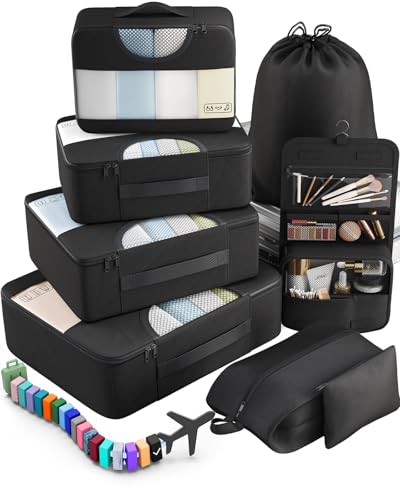In Australia, they use Type I power plugs and outlets. The voltage is 230V, and the frequency is 50Hz.
So, you’ll need a travel adapter in Australia. Their plugs and outlets are different from the Type A and B ones we use back in the States.
Quick Overview of the Plugs in Australia:
- Plug type in Australia: I
- Standard voltage: 230V
- Frequency: 50Hz
- Need a travel adapter? Yes, you do need a travel adapter
- Need a voltage converter? Some gadgets will probably need it
- Recommended plug adapter: Vintar Universal Travel Adapter Kit
Every piece of information here is confirmed with official electrical guidelines, IEC international standards, and firsthand insights from travelers worldwide.
The Only Travel Adapter You’ll Need in Australia
Ever tried jamming your plug into a foreign outlet, hoping for a miracle? Yeah… doesn’t work. We don’t sell travel adapters, but we did the research to find the best one for Australia—so you don’t have to. Here’s the winner:
Recommended Travel Plug Adapter
by 1,000+ travelers on Amazon
No adapter with you and already abroad? You’re not out of options—many airports and local shops sell them. Still, bringing your own is the easiest way to avoid overpaying or ending up with something that barely works.
People visiting Australia often continue their journey through Fiji, New Zealand, and Papua New Guinea. Be sure to check plug types for each stop.
Power Outlets in Australia
In Australia, they use Type I power plugs and outlets.
Type I

Type I outlets have two flat prongs in a V-shape with a grounding pin and accept both grounded and ungrounded Type I plugs; some ungrounded Type A plugs may fit with an adapter, but grounding will be lost.
Do You Need a Voltage Converter?
Your electronics must match the voltage of the country you’re visiting, and in Australia, the voltage is different from the 120V we use in the U.S. That means you’ll probably need a converter.
Always double-check the label on your device before using it abroad. If it shows “100-240V, 50/60 Hz”, your device is dual voltage and works on both 120V and 220-240V power sources without a converter. This is common for laptops, tablets, smartphones, cameras, and electric toothbrushes.

Which Travel Devices May Need a Converter?
Play it safe with your electronics — browse the most trusted voltage converters here.
| Device | Need Converter? | Notes |
|---|---|---|
| Phone | ❌ No (usually) | Most modern phone chargers are dual voltage (100–240V) |
| Laptop | ❌ No (usually) | Check the power brick label for 100–240V |
| Hairdryer | ✅ Yes (often) | High wattage; many models are not dual voltage |
| Electric toothbrush | ⚠️ Check voltage | Some models are 110V only |
| Camera / DSLR | ❌ No (usually) | Most chargers are dual voltage |
| Power bank | ❌ No | Charges via USB, adapter is enough |
| Electric shaver / trimmer | ⚠️ Check voltage | Older or cheaper models may not support 230V |
| Tablet / iPad | ❌ No | All models are dual voltage |
| Portable fan | ✅ Yes (sometimes) | Many models are not compatible with 230V |
| Game console | ⚠️ Check voltage | Newer consoles like PS5 and Xbox are often dual voltage — check to be sure |
| Bluetooth speaker | ❌ No (usually) | Charges via USB |
| E-reader (Kindle, etc.) | ❌ No | USB charging only, no converter needed |
Top Travel Essentials to Pack
Having the right gear can mean the difference between smooth travel and avoidable hassle. These are worth packing.
Digital Luggage Scale
Packing Cubes
Power Bank
More About Australia
Australia welcomed roughly 7.7 million international trips in the year ending March 2025. Visitors spent about $52.6 billion USD in Australia during that period—up 12% from the year before and comfortably ahead of pre‑pandemic levels. Americans accounted for around 672,000 arrivals with spending of about $2.3 billion, nearly back to 2019 figures. Holiday travel remains dominant, with over 3.3 million trips taken in that same timeframe.
The country is vast with variety: beaches and reef snorkelling in Queensland, cosmopolitan cities in Victoria and New South Wales, outback drives in the Red Centre, and island wilderness in Tasmania. Whether you’re chasing surf lessons on the Gold Coast, hiking in Tasmania, wine tasting near Adelaide, or snapping shots of Uluru at sunset, there’s something here that sticks. Transportation links—major airports, coastal cruises, scenic rail journeys—make major routes easily doable, and English is the language everywhere.
For U.S. travelers, Australia combines natural wonder with friendly infrastructure and cultural openness. Expect quality accommodation from beachfront resorts to boutique vineyards, reliable services, and policies that feel familiar. Tourism supports nearly a million jobs across the country, and visitors can tailor experiences from luxury coastal escapes to rugged wilderness adventure—all without overwhelming crowds. If you’re looking for big landscapes, safe travel, and what many call “easygoing Aussie charm,” Australia consistently delivers.
Top places to visit in Australia: Sydney, Melbourne, Brisbane, Perth, Adelaide, Cairns, Gold Coast, and Hobart.




